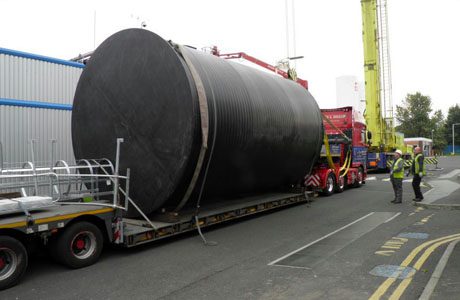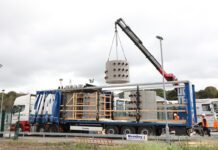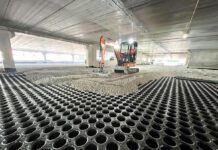
Thermoplastic tank expert Forbes Technologies says it is widening the range of its helically-wound thermoplastic tank offering, addressing a perceived demand from the water industry.
According to managing director Melvyn Jupp, some of the water utilities are now specifying helically-wound thermoplastic tanks for even the smallest of tanks. And this has provided the impetus for a recent round of investment, fast-tracking further increases in capacity and diameter range. With this latest investment and the use of state-of-the art automated equipment, says Jupp, “high quality tanks at very competitive costs are achievable with capacities from 1,000 to 100,000 litres.”
The firm has apparently invested over the past four years in its automated thermoplastic helical winding process, with the result that further diameters have been added to its range. Initially offering diameters of 3000mm, 3500mm and 4000mm, Forbes can now offer much smaller diameters, with tank diameters now ranging from 750mm to 4000mm in High Density Polyethylene (HDPE) highly chemical resistance grade PE-100.

These thermoplastic tanks are designed to BS EN 12573 and are produced on heated mandrels giving a totally homogeneous, solid, thick, void-free wall in HDPE, says Forbes’ literature.
The firm offers tanks and vessels in plastic and composite materials for the storage and processing of hazardous content. These are built to BS EN 12573-2000 and DVS 2205 (German code) standards, in the case of thermoplastic tanks with capacities in excess of 100 cu/metres. Forbes also offers composite tanks conforming to BS4994 -1987 or BS EN13121-2016 (a new standard due for publication later in 2016) with capacities of up to 200 cu/metres.
Forbes claims its wide range of materials and manufacturing facilities is an invaluable resource in meeting specific customer requirements, and providing economic solutions for long-term storage.
Forbes has dedicated factory units for the production of hand-built thermoplastic tanks, helically-wound thermoplastic tanks, glass-fibre composite tanks, and tanks in glass-fibre dual laminates.
A 20-year lifespan is typically offered, but this is often exceeded when using composite and dual-laminate tanks, says Forbes. The firm has a series of dual laminate tanks which it says are in their 42nd year of duty, in an application storing corrosive materials.
There are some subtleties to appraising the likely long-term chemical resistance of a tank. The data provided by raw material’s suppliers is inadequate, and often relates to only a few months of testing with an unstressed sample, says Forbes, and says little of how the material will cope with long-term loading.
Thermoplastics can suffer stress cracking when exposed over the medium to long term to chemical environments. When specifying tanks it is important to apply the correct chemical reduction factor to EN 1771 with allowances for permeation and possible degradation based on long term experience. Similarly it is important to select the correct corrosion barrier or thermoplastic inner shell. Tanks must have an inspection schedule. There is no product where you can “install and forget”.
Purchasers of tanks in plastic and composite materials should choose manufacturers who can offer a large range of materials, designs and methods of manufacture, suggests Forbes.






